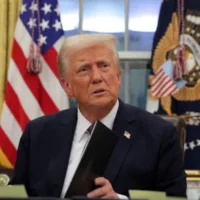Brussels (Brussels Morning) – The year 2024 caught sight of the highest number of Chinese armed ships around the disputed islands between Japan and China. Resolution of the sovereignty issue over the islands guarantees extended control of the East China Sea and access to the cluster of land rich in natural resources.
The controversial islets and rocks in the East China Sea are 170 kilometers away from Okinawa Prefecture, 170 kilometers northeast of Taiwan, and 330 kilometers off China’s coastal mainland. Altogether, three rocky outcrops and five volcanic islets encompass 6.3 square kilometers of the area.
The area is referred to as the Senkaku Islands by Japan, the Diaoyu Islands by China, and the Diaoyutai Islands in Taiwan. The development of events around these rocks and islets catches the attention concomitantly of regional as well as major global actors like the United States of America and the European Union.
The drivers of the dispute over the sovereignty of the Senkaku Islands are premised on the delimitation problem of the Sino-Japanese maritime boundary along geopolitical and economic grounds.
Historical background
People’s Republic of China (PRC) rejects Japan’s claim on the islands and alludes to the bygone Ming dynasty ownership of the territory. The PRC’s narrative is based on historical findings supporting its claim of having initially discovered the islands under the Ming Dynasty in the 14th century.
For the same reason, the PRC has included the area as an ‘inherent part of Chinese territory since ancient times’ and sustained ‘under the jurisdiction of China’s naval defences as affiliated islands of Taiwan’. On the contrary, while the factual truth is that Chinese emperors had been arranging expeditions and dispatching their envoys, there remains no proof today that the Senkaku islands were permanently inhabited and/or occupied by China.
As in the case of elaborating Japanese side argument, the Senkaku Islands were incorporated in January 1895 after a scrutinized assessment of the possible trace of foreign control over the islands.
In conformity with Japan’s official position, Tatsushiro Koga, a Japanese businessman explored the islands in 1884 and leased out four of them to Japan after the completion of on-site surveys by Japanese authorities. After no evidence of occupation was found, the islands were incorporated as terra nullius (land belonging to nobody) into Okinawa Prefecture during the 1894-1895 Sino-Japanese War.
The interesting fact is, following the end of the war, the signed Treaty of Shimonoseki obliged defeated China to cede the island of Formosa (Taiwan), together with the territory encircled and hemmed in by a cluster of rocky islands.
Legal clashes
While Japan does not consider the Senkaku Islands as being disputed areas or gifts conferred upon in the wake of the Treaty of Shimonoseki, the PRC argues that those islets and rocks were forcibly impounded.
In addition, the prolonged and secretly kept incorporation status of the islands by the Japanese government ignites Chinese enthusiasm and makes the case even more dubious. Due to this, some may vindicate the PRC’s stance, nonetheless, the old Chinese maps illustrate the controversial area as being Japanese territory, and as a subsequent action of the Treaty, Japan endorsed the international legal framework as a tool under which it exploited economic activities on Senkaku Islands.
The PRC and Taiwan pertained to the 1943 Cairo Declaration and the 1945 Potsdam Declaration that followed the surrender of Japan during World War II. It is stipulated under the Potsdam Declaration:
Japanese sovereignty shall be limited to the islands of Honshu, Hokkaido, Kyushu, Shikoku and such minor islands as we determine.
It is worth mentioning, that the PRC voiced its claims after it took over Taiwan’s United Nations seat and exploration of possible profitability of the continental shelf of the disputed area in 1971 due to the UN Commission economic mission.
Conversely, the Japanese position is inclined to utilize Article 3 of the 1951 San Francisco Treaty of Peace with Japan:
that the Senkaku Islands to be included in the Nansei Shoto Islands and be placed under the administrative authority of the US.
However, there is a condition to be taken into account. As China and Taiwan are no parties to the San Francisco Treaty, they are not compelled to have obligations under the treaty, which makes China boldly in statements calling on Japan to respect the Potsdam Declaration dispositions.
In the aftermath of the 1951 San Francisco Treaty of Peace with Japan, the US could administer the islands, but in the year 1972, the full-fledged administrative rights were returned to Japan under the Okinawa Reversion Agreement.
The real reason for confrontation?
The islands are located amid the Economic Exclusive Zones (EEZs) of Japan, the PRC, and Taiwan, and thus, the complications arise from not having a single unequivocal method for delimiting the maritime boundaries.
According to the United Nations Convention on the Law of the Sea (UNCLOS), the coastal states have the right to establish not only a territorial sea and a contiguous zone but also to pretend for an EEZ and an extended continental shelf. Likewise, they have the right to exploit the area to gain economic benefits and use it in different ways (e.g. maintaining fisheries and other installations for renewable energy production, etc.)
It would be much easier to address the problem if there was certainty and unanimity between China and Japan in choosing the legal instrument for the Islands’ dispute resolution. While Japan shows a proclivity toward referring to the ‘equidistance principle’, China rejects equidistance as the sole criterion and calls for the interpretation of equitable principle and international customary law.
Equidistance means drawing a median line which in Japan’s case would benefit it under the UNCLOS and extend its EEZ and continental shelf.
The equitable principle on the other hand emphasizes proportionality, resource distribution, geography as well as historical claims.
Another plausible cause of the dispute is – the UN Economic Commission for Asia and the Far East (ECAFE) conducted a geological survey in 1968 and concluded that there was a high probability that the continental shelf of the Senkaku Islands might be the world’s richest and most voluminous oil reservoir.
Bearing that in mind, the area is no longer of a tangential placement to the global actors of international relations.
Polish-American diplomat and political scientist, Zbigniew Brzezinski said:
Japan is a stable, economic ally that anchors U.S. influence in the Pacific.
On Japan.
U.S. strategy should focus on maintaining dominance while preventing conflicts that could weaken its influence.
On Taiwan.
For Americans, Japan and Taiwan are important geopolitical pivots that play a significant role in deterring China’s economic and military dominance in the Pacific, and therefore, even a small group of islets and rocks have the upper hand when it comes to geopolitics.
As for the EU, it has traditionally pursued a three-pronged policy in the East China Sea (i.e. principled neutrality) meaning that it would not interfere in sovereignty conflicts over the islands or other kinds of disputes. But in the 2020 year common foreign and security policy report it called on parties to refrain from breaching the status-quo of the islands and respect the right to free navigation.
Shall the islands be advocated in favor of Japan to deter China’s further economic and territorial expansion is one important task for Westerners, later to avoid stymieing their own international development goals and programs while the other is not to contradict international humanitarian and democratic values in doing so.
Dear reader,
Opinions expressed in the op-ed section are solely those of the individual author and do not represent the official stance of our newspaper. We believe in providing a platform for a wide range of voices and perspectives, even those that may challenge or differ from our own. We remain committed to providing our readers with high-quality, fair, and balanced journalism. Thank you for your continued support.



